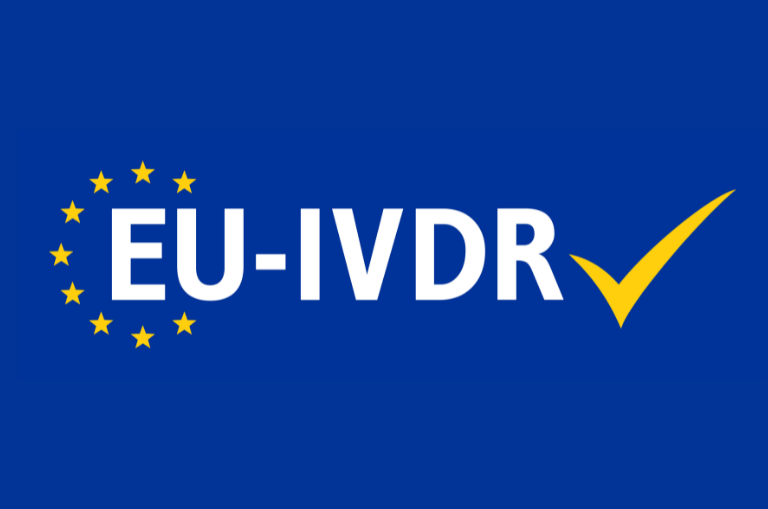By Günter Weisshaar
The announcement of the In Vitro Diagnostics Regulation (IVDR) in 2017 was celebrated as an essential upgrade to in vitro diagnostic (IVD) device regulations in Europe. This article discusses the important changes, challenges, and benefits of IVDR, as well as an industry insight into how to work together to ensure IVD devices are, and continue to be, compliant.
The IVDR is the European Union’s regulatory overhaul of pre- and post-market requirements for IVD devices. It came into force in May 2017, with a five-year transition period that was initially proposed to finish on May 26, 2022. However, the COVID-19 pandemic added further strains to already tight timelines, as a result, the European Commission proposed a more progressive roll out to prevent disruption in the supply of essential healthcare products.

Keep ahead of the IVDR deadlines and ensure the products that you rely on are properly registered. (Watch a webinar).
The IVDR came into force in May 2022 for new IVDs and Class A non-sterile devices, but allows for a more gradual implementation – between 2025 and 2028 – for devices in other classes and in-house assays, provided that, from the date of application of this Regulation, those devices continue to comply with the IVD Directive, and there are no significant changes in the design and intended purpose of those devices.
Class D devices which present a high patient risk and high public health risk will now need to be certified by May 26th, 2025. Class C and B devices which represent lower levels of public health risk will require certification by May 26th 2026 and May 26th 2027 respectively. Each device category is also given an additional sell-off year to handle inventory of devices classified under IVDD. This is summarized below:
IVDR certification timeline
|
Certified by May 26th |
Device Class |
Risk level |
Sell off by |
|
2022 |
A |
Low patient risk/low public health risk |
2025 |
|
2025 |
D |
High patient risk/high public health risk |
2026 |
|
2026 |
C |
High patient risk/moderate public health risk |
2027 |
|
2027 |
B |
Moderate patient risk/low public health risk |
2028 |
What are the main changes under IVDR?
Perhaps the most significant change concerns the classification structure, which organizes IVD devices according to the four risk classes (A-D) presented above. Under the previous regulation, only around 20% of IVD devices needed notified body (NB) approval, with the majority allowed to be self-certified by the manufacturer. In contrast, under IVDR; approximately 80% of devices will need some level of NB oversight, not only to bring the product to market, but also throughout its entire lifecycle to ensure it remains compliant.
This rigorous post-market surveillance will require manufacturers to update technical information to enable continuous evaluation of new hazards. As technology evolves, it may also be necessary to update risk profiles – for example, to account for changes in antibiotic resistance, new interfering substances, or variations in stability profiles – and product performance studies to retain certification.
Importantly, product scope will be expanded to include IVD devices that have come to market quite recently. The previous directive was launched in 1998, and there have since been several innovations and novel techniques that weren’t covered under that ruling. IVDR is a state-of-the-art regulation with comprehensive coverage of new technologies – such as NGS, POC testing, companion diagnostics, medical software – that ensures they are clinically relevant and safe for the patient.
There will also be stricter rules on technical documentation and clinical evidence. Currently, manufacturers can use legacy data – original data used when they brought the product to market – but this may no longer be sufficient, and additional studies may be required to prove the continued clinical performance and safety of the IVD device.
Acknowledge the challenges and focus on the benefits
This overhaul will modernize device classification, addressing safety and product concerns that may have slipped through the gaps under the previous directive. But IVDR brings many challenges, which must also be addressed to make sure they don’t eclipse the benefits.
The extra time and cost involved in gaining IVD device certification will greatly impact manufacturers, especially smaller companies with limited resources. All manufacturers will be stretched, as there will be increased responsibility to supply technical documentation of a product both pre- and post-market. This may cause some companies to consolidate their portfolios if a product is deemed commercially unviable to continue, potentially restricting the availability of certain IVD devices in the short term.
Now is a good time to take an inventory of the products that you use and contact your supplier to make sure they will be registered to avoid any disruption in your supply. If disruption seems likely you still have time to find alternatives. NBs will also be under unprecedented pressure to certify the mountains of applications coming their way which is a bottleneck that could disrupt supply.
Furthermore, there will be increased responsibilities across the entire supply chain – including suppliers, manufacturers, R&D teams, sales departments, and distributors – where companies will have to establish contracts with all involved parties. A company will have to know exactly who contributed to the development of the product, helped get it to market, and kept it there throughout its entire lifecycle. This will provide greater transparency along the supply chain, but is far more labor intensive, leading to higher costs and slower certification if a company isn’t prepared.
New requirements for sharing information between manufacturers and OEM customers will also come into force. Confidential information and intellectual property aren’t something companies usually want to share but, under IVDR, OEM customers are expected to receive technical documentation on the IVD device.
Under IVDR, in-house tests (LDTs) will also have to be registered which places a large burden on clinical labs. For this reason, CE-marked IVD devices are preferred meaning that now is the time to evaluate if there is a viable commercial alternative for LDTs that are currently in use.
How has Tecan approached the transition?
Tecan has embraced the challenge and prepared from the outset, closely following its recommendation to ‘plan, engage and communicate’. We engaged NBs early, scheduling quality system audits, and clarifying product classifications and groupings before developing a comprehensive submissions roadmap.
Throughout the entire process, we have also maintained communication with all internal and external stakeholders to ensure consistency across the board and to manage expectations. This framework is providing the confidence for timely approval of the IVD device portfolio and, as such, Tecan was one of the first companies to gain IVDR certification for its DHEA Saliva ELISA diagnostic assay kit, and the first to undergo an IVDR QMS audit from its NB.
The goal of IVDR is to provide higher quality standards and ensure the delivery of safe, reliable, and fully compliant IVD devices from the day they enter the market, for every patient. It has been a steep learning curve for Tecan – and the whole industry – to embark on this arduous task, which is why we must all help each other during the transition.
Or visit www.tecan.com/ivdr to access resources to help you with your recertification and ongoing IVDR compliance.
About the author

Günter Weisshaar
Günter Weisshaar joined Tecan in 2003 as Senior Vice President, Head of Quality Assurance and Regulatory Affairs. He has been a member of the Management Board from 2003 to 2010 and a member of the Extended Management Board ever since. Günter has more than 35 years of experience in the in-vitro diagnostics and medical device industry. Together with his team and Tecan’s customers, he ensures successful strategies for commercialization of products worldwide. Günter is an expert for implementation and certification of quality management systems in medtech and IVD companies. He is also a member of the Regulatory Affairs Committee at EDMA (European Diagnostic Manufacturers Association).











